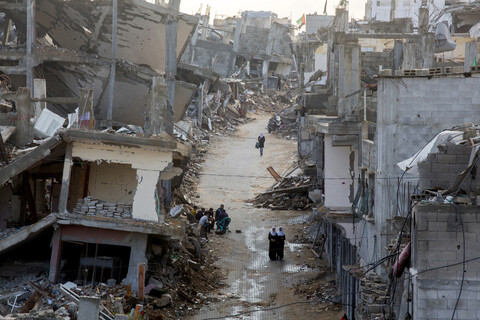The Electronic Intifada 2 December 2016
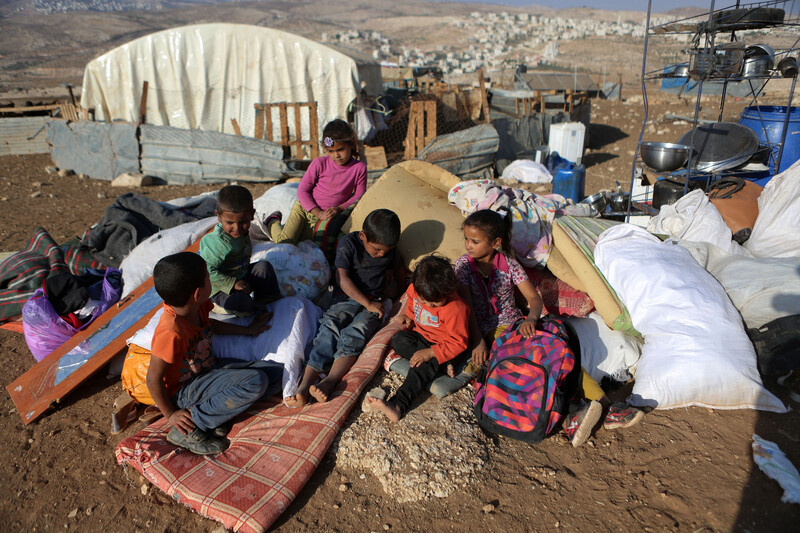
Palestinian Bedouin children sit on their belongings as Israeli forces confiscate shelters on the pretext they were built without a permit in the West Bank village of Jaba, near Jerusalem, on 15 November. Israel routinely denies Palestinians building permits and then destroys structures built without permission.
APA imagesIsraeli forces killed four Palestinians during the month of November.
Three were killed during separate alleged stabbing attacks on Israeli forces. No Israeli soldiers were injured in any of the incidents which led to the death of the alleged assailant.
One of those killed, Muhammad Nabil Jawdat Salam, was a 14-year-old boy shot at Shuafat checkpoint near Jerusalem on 25 November.
The other slain persons were identified as Maen Nasser al-Din Abu Qaraa, 23, shot near Ofra settlement in the central West Bank on 3 November, and Jihad Muhammad Said Khalil, 48, killed at Qalandiya checkpoint near Ramallah on 22 November.
Another man, 32-year-old Muhammad Amr, was critically wounded during an alleged stabbing attack in the northern West Bank village of Huwwara on 9 November.
100 Palestinians killed this year
Seventy-three Palestinians, including 21 children, and eight Israelis, including a girl, have been killed during actual and alleged attacks carried out in the West Bank so far this year, according to the United Nations monitoring group OCHA.
A total of 100 Palestinians have been slain by Israeli forces this year, including Muhammad Abu Saada, 25, who was shot in the chest during a demonstration in the Israeli-imposed “buffer zone” along Gaza’s boundary southeast of al-Bureij refugee camp on 18 November.
Two Palestinians, Raed Fuad Hijjeh, 38, and Ahmad Elayyan Zayid, 44, died of injuries inflicted by Israeli occupation forces years earlier during the month of November.
A Palestinian woman was killed on 16 November during an exchange of fire between Palestinian Authority forces and civilians in Balata refugee camp near Nablus in the West Bank.
Hilda Bassam al-Asta, 39, “was not involved in the clashes, which erupted over the course of a search and arrest operation in the camp,” OCHA reported, adding that three members of the PA forces were also injured.
Wildfires broke out in multiple locations across Israel and the occupied West Bank between 22 and 27 November, forcing tens of thousands to leave their homes. More than 20 Palestinians, including citizens of Israel, were rounded up as Israeli leaders, including Prime Minister Benjamin Netanyahu, blamed Palestinian “terrorism” for the blazes.
A Palestinian resident of the West Bank village of Battir arrested on suspicion of arson was released without charge after five days of interrogation, and Israeli police later admitted that they may have started a fire that had been blamed on Palestinians.
Demolitions
The UN coordinator for aid to the West Bank and Gaza Strip condemned Israel’s obstruction of humanitarian assistance to Palestinian communities after the army seized donor-funded tents in the Bedouin village of Khirbet Tel al-Himma in the Jordan Valley.
“The structures were all provided as humanitarian aid, following earlier demolitions in the same community on 27 September 2016, which left the affected families without shelter or kitchens,” OCHA stated.
“In 2016, there has been a dramatic rise in demolitions by Israel of donor-funded humanitarian assistance, with 286 such structures demolished or seized so far this year – a 165 percent increase from the total in 2015,” OCHA added.
Approximately one-quarter of the targeted structures were in Bedouin communities in the area of the E1 settlement expansion project around Jerusalem, according to OCHA.
Israeli forces demolished or requisitioned at least 65 structures during the month, displacing 68 Palestinians, including 40 children, on the pretext that they were built without a permit, according to OCHA reporting. The targeted structures affect the livelihoods of nearly 400 people.
On the same pretext, Israeli forces also seized tractors and bulldozers in five communities and seized four vehicles and 150 tons of wood from coal workshops, “citing the violation of environmental regulations, affecting the source of livelihood of at least 1,000 workers.”
On eight occasions, Israeli forces temporarily displaced more than 300 people, most of them children, from the northern Jordan Valley communities of Khirbet al-Ras al-Ahmar and Ibziq for several hours each time for military training.
Rafah crossing – the sole point of exit and entry for the vast majority of the two million Palestinians in the Gaza Strip – was exceptionally opened by Egypt on four days during the month. More than 2,000 Palestinians were allowed to exit, and more than 1,000 to enter.
“Approximately 20,000 people have previously registered and been waiting to exit Gaza via Rafah since the beginning of 2016, according to the Palestinian authorities in Gaza,” OCHA stated.
Khan Eshieh camp
Civilian residents began evacuating Khan Eshieh refugee camp in the countryside of Damascus in the last days of the month.
This followed an agreement between the Syrian government and the armed opposition in the area that fighters in the adjacent town of Khan Eshieh and surrounding villages would evacuate to the opposition-controlled Idlib governorate in the north of the country, after surrendering their heavy weapons. The agreement includes a provision for some of the civilians in the refugee camp to leave with them.
The camp had been under siege for two months, with all routes in and out blocked by government forces. Five Palestinian refugees living in the camp, including a 14-year-old girl, were killed as a result of attacks on the camp during the month.
Among them was, Hussein Ali Muhsin, 52, a worker with UNRWA, the UN agency for Palestine refugees, killed in a Russian airstrike that hit a mosque during morning prayers. His uncle, Ahmad Mahmoud Muhsin, 77, was also killed in the 13 November incident, and at least 12 others were injured, according to UNRWA. One of those injured was reported by the Action Group for Palestinians of Syria to have died of his injuries days later.
Camp residents previously told The Electronic Intifada that Khan Eshieh refugee camp itself has been free of any fighting factions for the past three years, and that the depopulation of Palestinian camps in the country “is not only a disaster for Palestinians in Syria, but a blow for the Palestinian refugee cause in general.”
The Action Group for Palestinians of Syria recorded a total of 19 Palestinian refugee deaths related to the ongoing war during the month of November, including 11 killed while fighting, three cases of persons who died by torture in Syrian government prison, one killed at the hands of the Islamic State, and the death of a child as a result of the ongoing siege on Yarmouk camp.
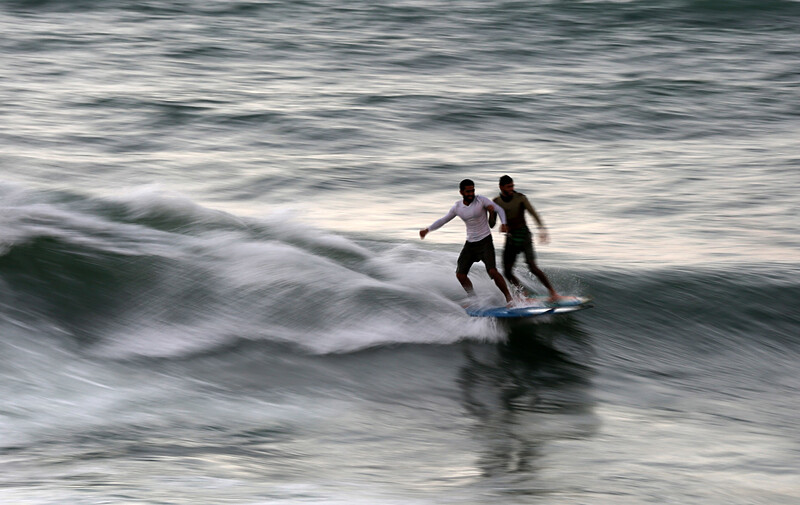
Palestinian men surf off the beach of Gaza City on 2 November.
APA images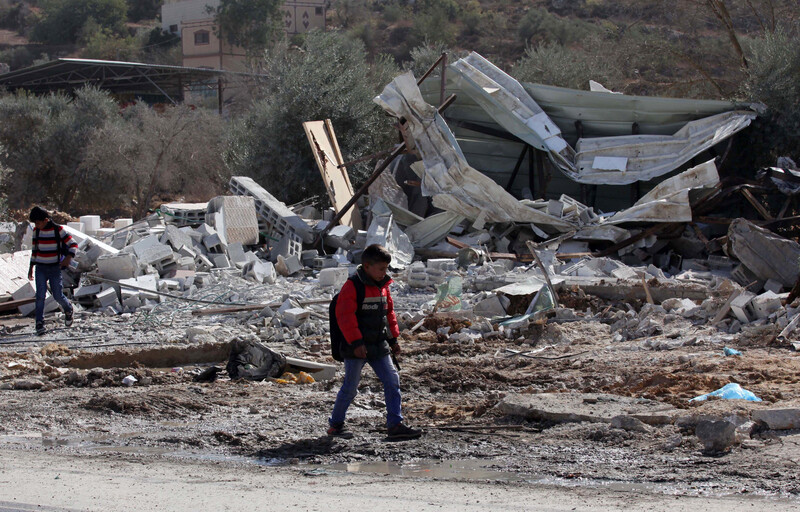
Palestinians inspect the rubble of shelters demolished after Israeli authorities said they were built without a permit in the village of Beita, south of the West Bank city of Nablus, on 3 November. Israel routinely denies Palestinians building permits and then destroys structures built without permission.
APA images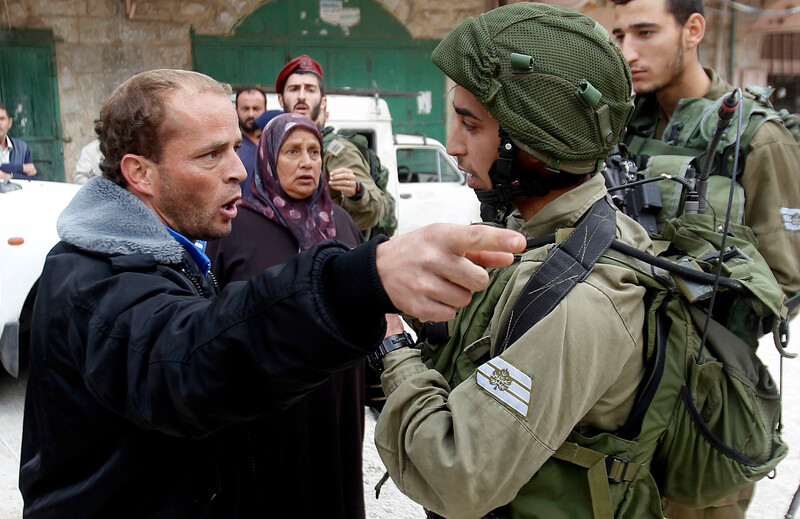
A Palestinian man confronts Israeli forces after they arrested two Palestinian youths, accusing them of throwing stones at soldiers, in the West Bank city of Hebron on 16 November.
APA images
An Israeli officer records Palestinian and Israeli activists building a tent near the West Bank city of Tubas during a demonstration against the construction of Jewish settlements in the Jordan Valley, on 17 November. According to the Israeli human rights group B’Tselem, 97 percent of the Jordan Valley is off-limits for Palestinian use. This is almost 25 percent of the total area of the West Bank.
APA images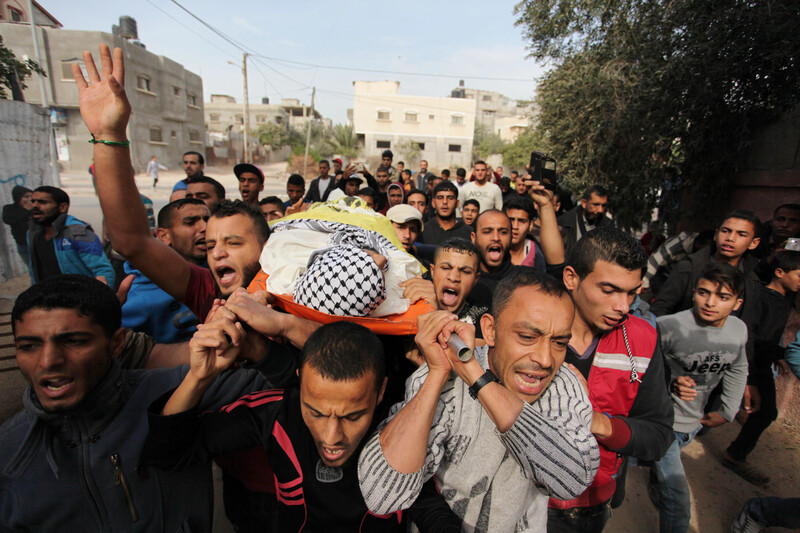
Mourners carry the body of Muhammad Abu Saada, a 26-year-old Palestinian who was shot dead by the Israeli army during a protest along Gaza’s eastern boundary, during his funeral in the Nuseirat refugee camp, central Gaza Strip, on 19 November.
APA images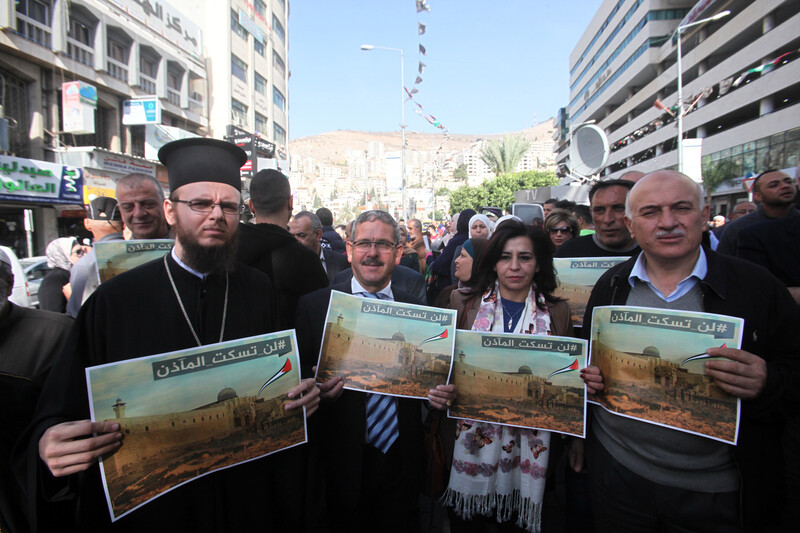
Palestinians in the West Bank city of Nablus protest against an Israeli bill banning mosques from broadcasting the call to prayer, on 20 November. Israeli Prime Minister Benjamin Netanyahu said he backed the bill, which critics have called a threat to religious freedom.
APA images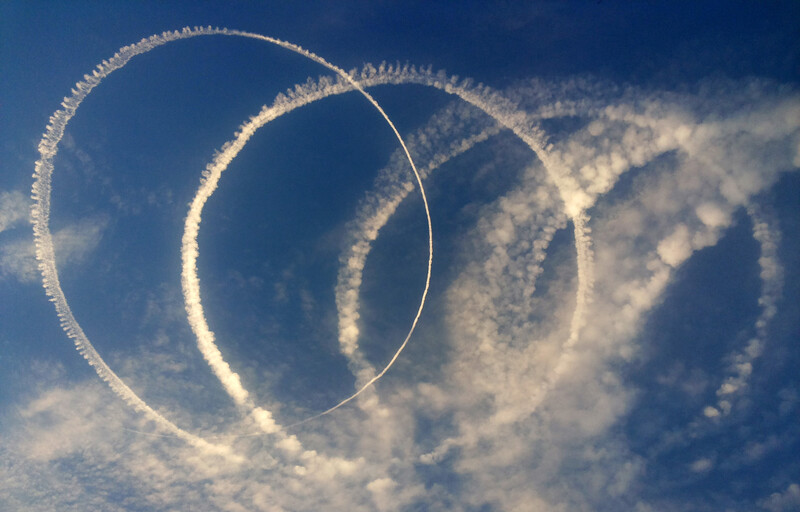
Israeli F-16 fighter jets fly over Gaza City on 20 November.
APA images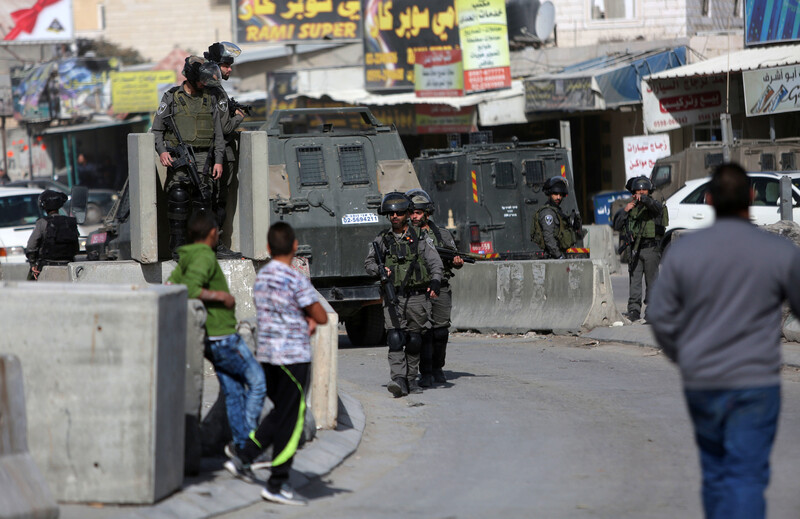
Israeli forces gather at the site where a Palestinian man was shot dead after allegedly walking towards guards while brandishing a knife at the Qalandiya military checkpoint between the West Bank cities of Ramallah and Jerusalem, 22 November. The slain man was identified as Jihad Muhammad Said Khalil, 48, from Beit Wazan village near the West Bank city of Nablus.
APA images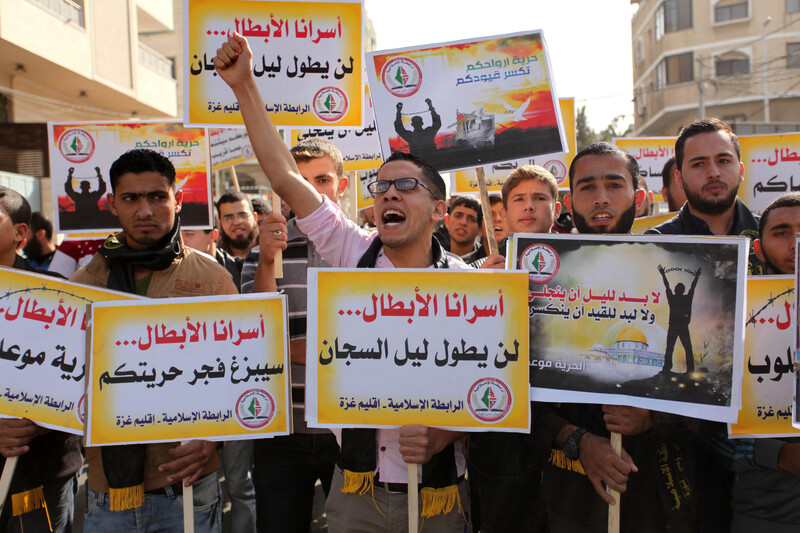
Palestinians show solidarity with Palestinians on hunger strike in Israeli prisons outside the Gaza City office of the United Nations High Commissioner for Human Rights on 22 November.
APA images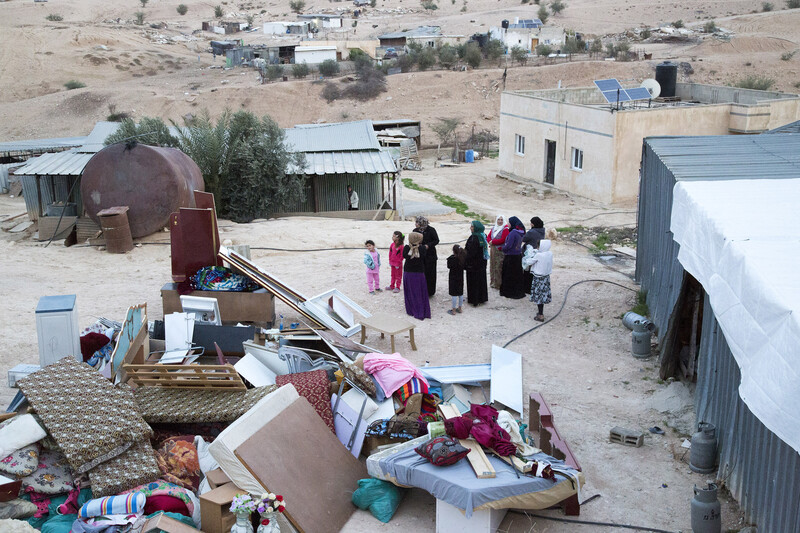
Residents of the unrecognized Bedouin village of Umm al-Hiran stand next to their house after removing all of its contents ahead of an expected demolition in the Naqab desert region in the south of present-day Israel on 22 November. The Israel Land Authority announced the previous day that it would destroy the village, but the operation was delayed after a mobilization of protesters, including Palestinian members of Israel’s parliament, the Knesset, to prevent it.
ActiveStills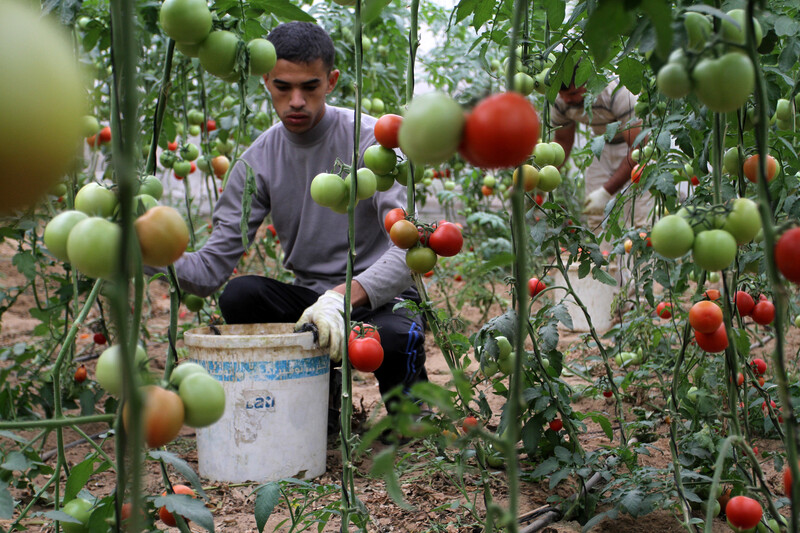
A Palestinian man picks tomatoes at a farm in Rafah, southern Gaza Strip, on 23 November.
APA images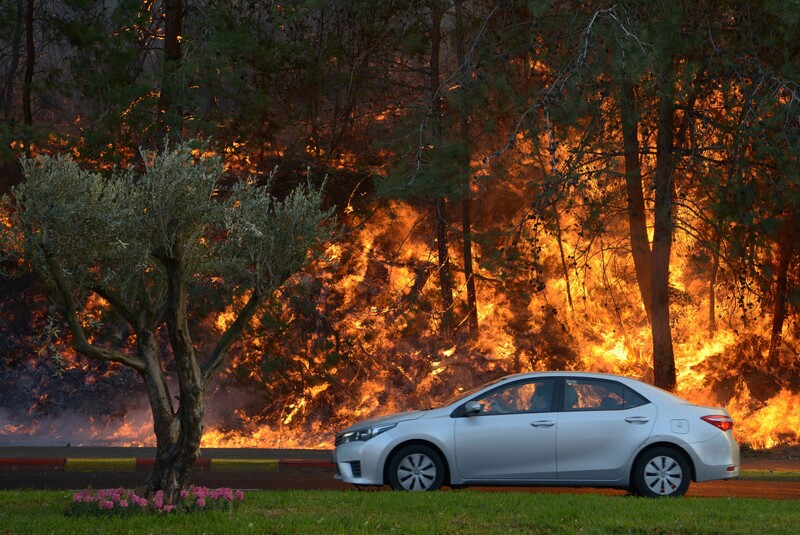
A car passes burning trees in a suburb of the coastal city of Haifa, in the north of present-day Israel, on 24 November. Dry air and strong winds created conditions for 1,773 reported fires over several days in the West Bank and Israel.
EPA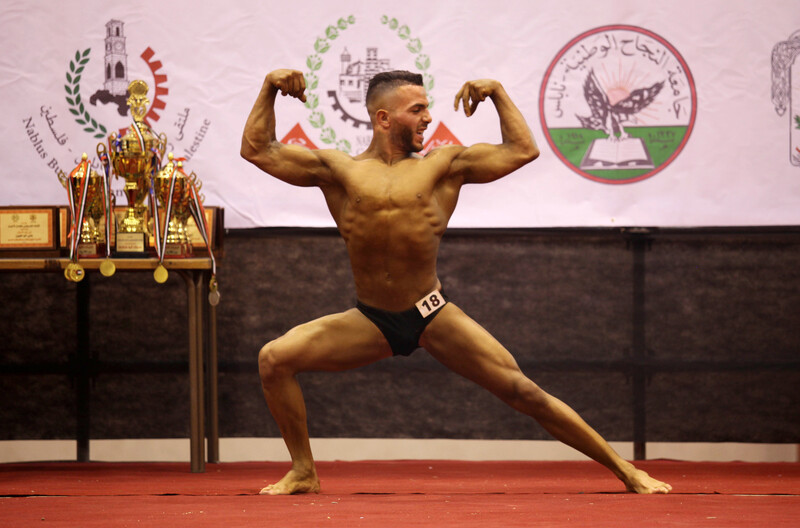
A contestant poses during a bodybuilding competition in the West Bank city of Nablus on 25 November.
APA images
Christian worshipers light candles inside the Church of the Nativity in the West Bank city of Bethlehem on 26 November at the beginning of Advent, the season ahead of the celebration of the Nativity of Jesus on Christmas.
APA images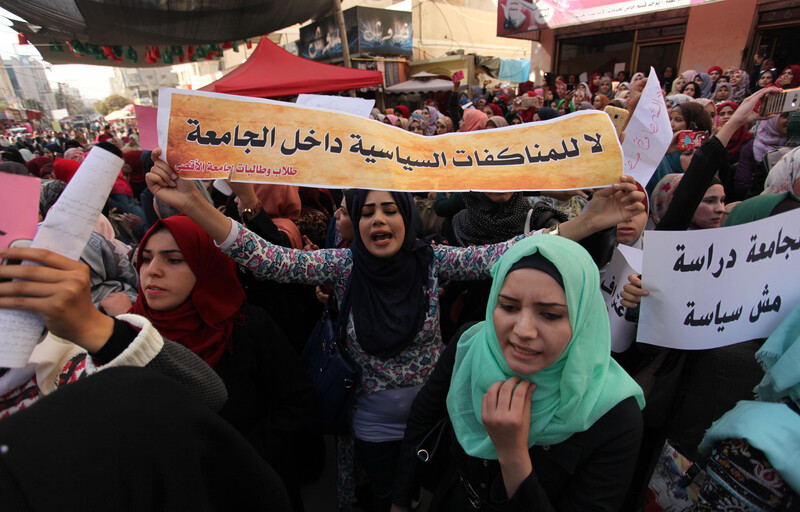
Palestinian students from the Al-Aqsa University protest in Gaza City on 28 November. The university and its more than 26,000 students have found themselves caught up in the political feud between the Fatah-led Palestinian Authority in the West Bank and Hamas, which governs Gaza. After freezing hiring and salaries, earlier this year the Ramallah government called on students not to register at Al-Aqsa because their degrees might not be accredited.
APA images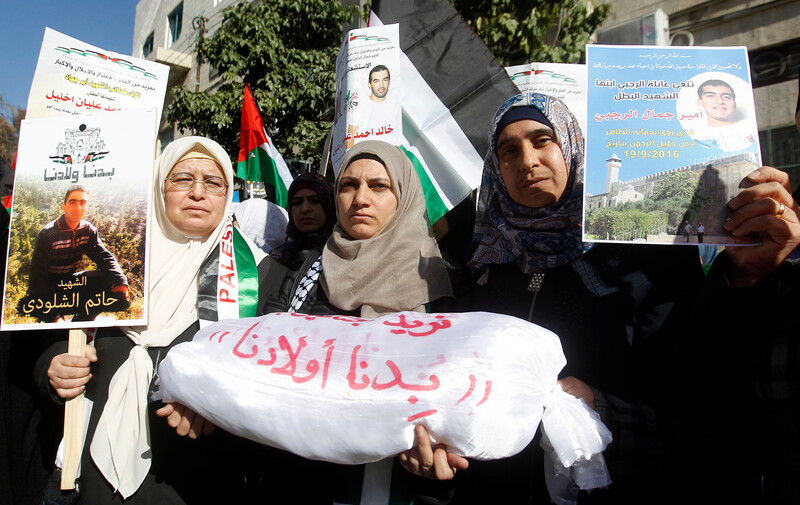
Palestinians call on Israel to return the bodies of Palestinians slain during attacks or alleged attacks during a protest in the West Bank city of Hebron on 28 November.
APA images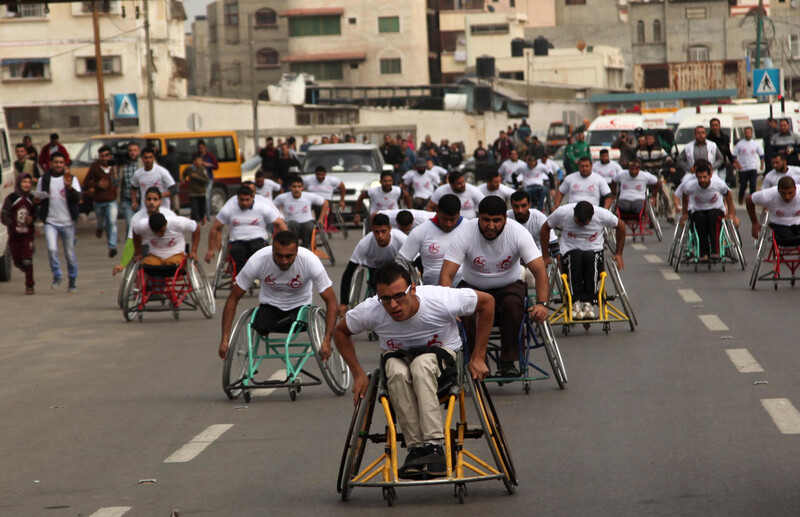
Palestinian men compete in a race in Gaza City organized for those wounded in Israeli wars on 29 November. Tens of thousands of Gaza residents are learning to cope with disability or lost limbs after the three successive assaults on Gaza between 2008 and 2014.
APA images
Palestinian Authority leader Mahmoud Abbas gestures after delivering a speech on the second day of the Seventh Fatah Congress at the Muqataa, the PA headquarters, in the West Bank city of Ramallah on 30 November. Abbas addressed his party’s first congress since 2009 as he contends with internal dissent and grim prospects for realizing a Palestinian state.
APA images

